Gas stations are often viewed as functional buildings that serve the refueling of vehicles. However, there are some gas stations that challenge this notion by introducing groundbreaking architectural designs. Let’s explore the world’s most unique gas station, where architecture and function merge to attract travelers and architecture enthusiasts alike.
R.W. Lindholm Service Station
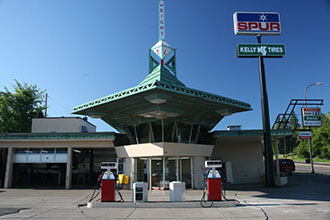
R.W. Lindholm is a 1958 building designed by legendary architect Frank Lloyd Wright. The cantilevered copper roof and the simple choice of materials redefine the boundaries of functional architecture. Wright’s philosophy is to turn something practical into a work of art, and he has succeeded in creating a design that is both visually striking and enduring.
Repsol Gas Station
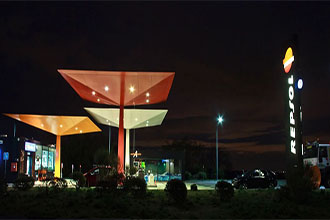
The Repsol gas station was designed by Foster + Partners in the late 1990s to embody a modern architectural aesthetic. Its modular canopy system became a unique signature of a design that could be easily replicated in multiple locations. The gas station seamlessly blends into the urban environment with its simplicity and minimalism, demonstrating the perfect combination of functionality and artistic expression
NP Gas Station
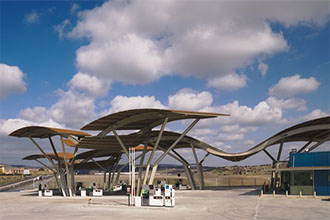
Designed by Belen Moneo and Jeffrey Brock, the building pays homage to the gas stations of the 1940s and 1950s while incorporating some contemporary elements. The soaring ceiling looks like a bird in flight, adding a sense of movement and vitality. This architectural masterpiece reinterprets the traditional meaning of a gas station, and it invites travelers to stop and admire its unique beauty.
Helios House
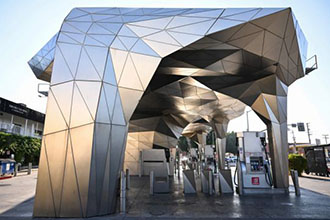
Helios House in Los Angeles reimagines the concept of a gas station through sustainable design principles. The eco-friendly gas station’s facade is made of recycled stainless steel and features 90 solar panels to generate clean energy, earning LEED Green building certification. Helios House is proof that gas stations are evolving to combine sustainability with architectural excellence.
Gas Station in Galanta
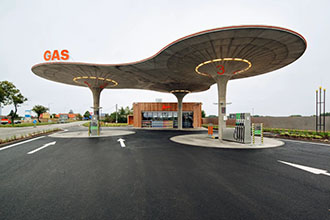
Prague-based Atelier SAD designed the Galanta gas station in 2011 to contrast its streamlined kiosks with an organic curved canopy made of reinforced concrete, supported by three large columns. The gas station impresses customers by harmoniously blending modern design elements with its natural surroundings.
Union 76 Gas Station
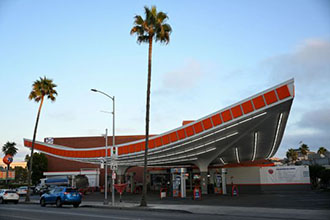
Built in 1965 and designed by Gin Wong of Pereira and Associates, Union 76 gas Station showcases the iconic Googie architecture. The futuristic canopy, which looks like an alien spaceship, has become an iconic landmark in Beverly Hills. This gas station is a striking example of the perfect fusion of artistic expression with the functional needs of a gas station.











 About Us
About Us 2024-11-08
2024-11-08


